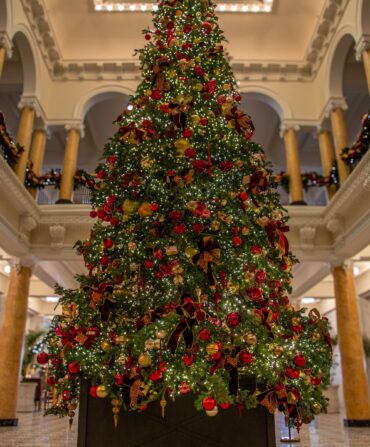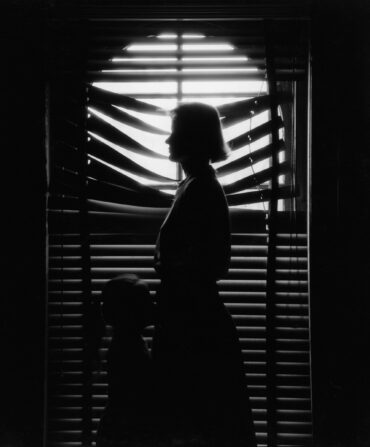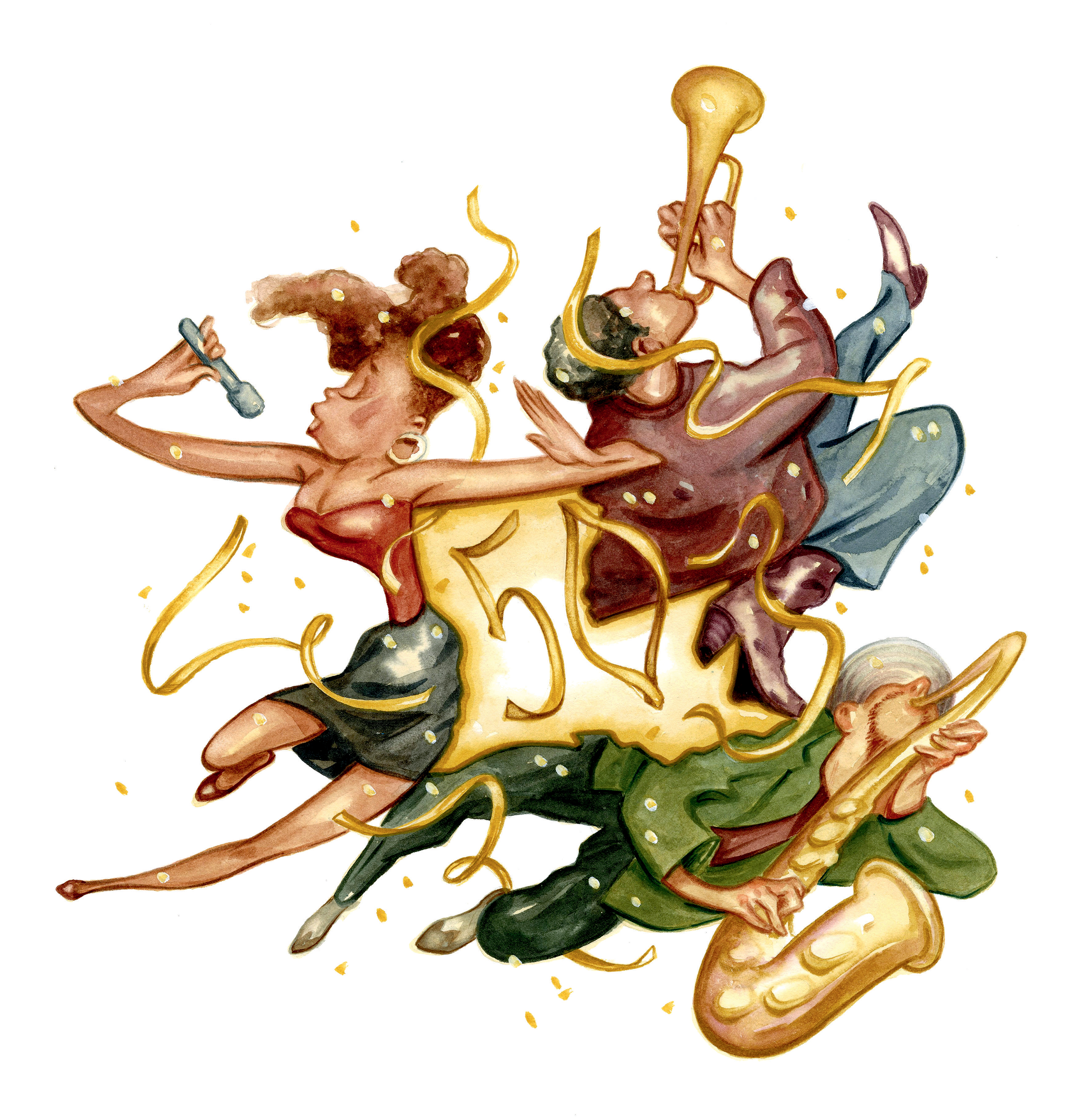
Tim Bower
MUSIC
Louisiana
Jazz Fest’s Golden Anniversary
Gregory Davis and his crew in the Dirty Dozen Brass Band thought they knew the drill when they booked a street parade gig in Chicago a few years back. “But it was so different,” he says. “People had to stay on the sidewalks. We stopped at all the red lights. In New Orleans, people aren’t content to stand on the sidelines. People here join in.” That inclusive spirit will be on full blast at the Fiftieth Anniversary New Orleans Jazz & Heritage Festival (April 25–May 5). What began in 1970 with hometown greats like Mahalia Jackson and the Preservation Hall Jazz Band playing to 350 people has transformed over the years to spotlight multiple genres and such stars as Aretha Franklin, Stevie Wonder, the Allman Brothers Band, and Willie Nelson—and the event now draws nearly half a million music lovers. Although birthday-year headliners include the Rolling Stones, Jimmy Buffett, Van Morrison, Diana Ross, and Earth, Wind & Fire, the heart of Jazz Fest lies in the other five hundred names on the lineup. Eighty percent hail from the area, with local heroes such as Irma Thomas (known as the Soul Queen of New Orleans), Trombone Shorty, and Davis’s own Dirty Dozen. “New Orleans music is special because it’s a feeling that comes from within,” Davis says. When he’s not behind his trumpet, you can find Davis splitting cracklings or fried soft-shell crabs with his friends (“I’m not supposed to eat all that,” he says, “but once a year can’t hurt”), walking stage to stage to catch performing peers, or talking to the people who traveled far to appreciate jazz in its birthplace. “This is a neighborhood event,” he says. “The music, the food, the people: Jazz Fest is just showing off things that are happening here all the time.” nojazzfest.com
OUTDOORS
Alabama
Wade in the Water Lilies
Happening upon a Cahaba lily is like discovering one of the universe’s secrets. The aquatic plants only appear in rivers at or above the southern fall line in Central Alabama, especially in the Cahaba, and in a handful of waterways in South Carolina and Georgia. Each three-inch-wide blossom unfurls into pointed petals that resemble an exploding star. “I’ve seen little old ladies weep at their first sighting of this plant,” says Dr. Larry Davenport, the foremost expert on it. “The lily has become a symbol of the wild and free-flowing places of Central Alabama.” Now in its thirtieth year, the Cahaba Lily Festival (May 18) in West Blocton, a town between Tuscaloosa and Birmingham, celebrates its native charmer, which usually peaks from Mother’s Day to Father’s Day. Registration begins at 8:00 a.m., followed by a free program of nature lectures and a keynote talk by Davenport. After lunch, shuttles pick up guests for a field trip four miles away to the Cahaba River to observe swaths of the plants from shore. If the current isn’t too fast, they can also paddle canoes or wade among the lilies before evening falls. “The flower opens at dusk, full of nectar, with a sweet and spicy perfume,” Davenport says. Hours after visitors leave, the fragrance attracts pollinating moths that flutter in the flowers by moonlight, ensuring another show next year.
cahabalily.com
FILM
Arkansas
Big-Screen Dreams
Professional guidance can come in unexpected ways. For the Afghan American actress Ursula Taherian, it was an agent who suggested she get a spray tan to darken her skin for roles. She not only started landing gigs, but also gained inspiration for her comedic short film, The Brownlist: One Girl’s Journey to Becoming Diverse…Enough, about what it’s like to build a career in La La Land as a minority. Taherian entered her work into last year’s Bentonville Film Festival, an event cofounded in 2015 by the actress Geena Davis, known for starring in Thelma & Louise and A League of Their Own. Davis has made it the mission of her small-town movie fest to challenge the status quo in Hollywood, where only 7.7 percent of directors are minorities. The festival (May 7–11) showcases storytellers often overlooked because of their gender, ethnicity, sexual orientation, disability, or age, exposing their work to investors, studios, and producers. In turn, Bentonville sees an A-list cast of visitors each spring, and attendees have the opportunity to experience a sort of Sundance of the South. As for Taherian’s Brownlist? It won the 2018 festival’s best short film award. Her prize includes an invitation to direct a feature film for MarVista Entertainment. “The win would have been enough,” she says. “But to direct a feature? My heart races just thinking about it.” bentonvillefilmfestival.com
FOOD
Florida
Win, Dine, Cast a Line
Six chefs spend a day on a fishing boat… no, it’s not the setup for a joke, but the premise behind Omni Amelia Island Plantation Resort’s Fish to Fork (May 9–12). The weekend-long feast and competition includes three face-offs: a fishing excursion, when the chefs take to the Atlantic to hook their main ingredient; an individual challenge, in which each chef must prepare his or her catch; and a final showdown that gives two teams an hour to create a gourmet meal to serve to the four-hundred-plus attendees. One of this year’s competitors, chef Kerri Rogers of the modern Southern restaurant Bellwether in Jacksonville, grew up fishing along the Florida coasts but is eager for her first offshore angling experience. The competition is stiff—Rogers will cook alongside such culinary luminaries as Maneet Chauhan of Chauhan Ale & Masala House in Nashville and Whitney Otawka of the Greyfield Inn on Georgia’s nearby Cumberland Island. Camaraderie, Rogers points out, matters as much as the contest. “I’m excited it’s all female chefs this year,” she says. “People say a woman’s place is in the kitchen. Well, it is. We get to prove that.” omnihotels.com
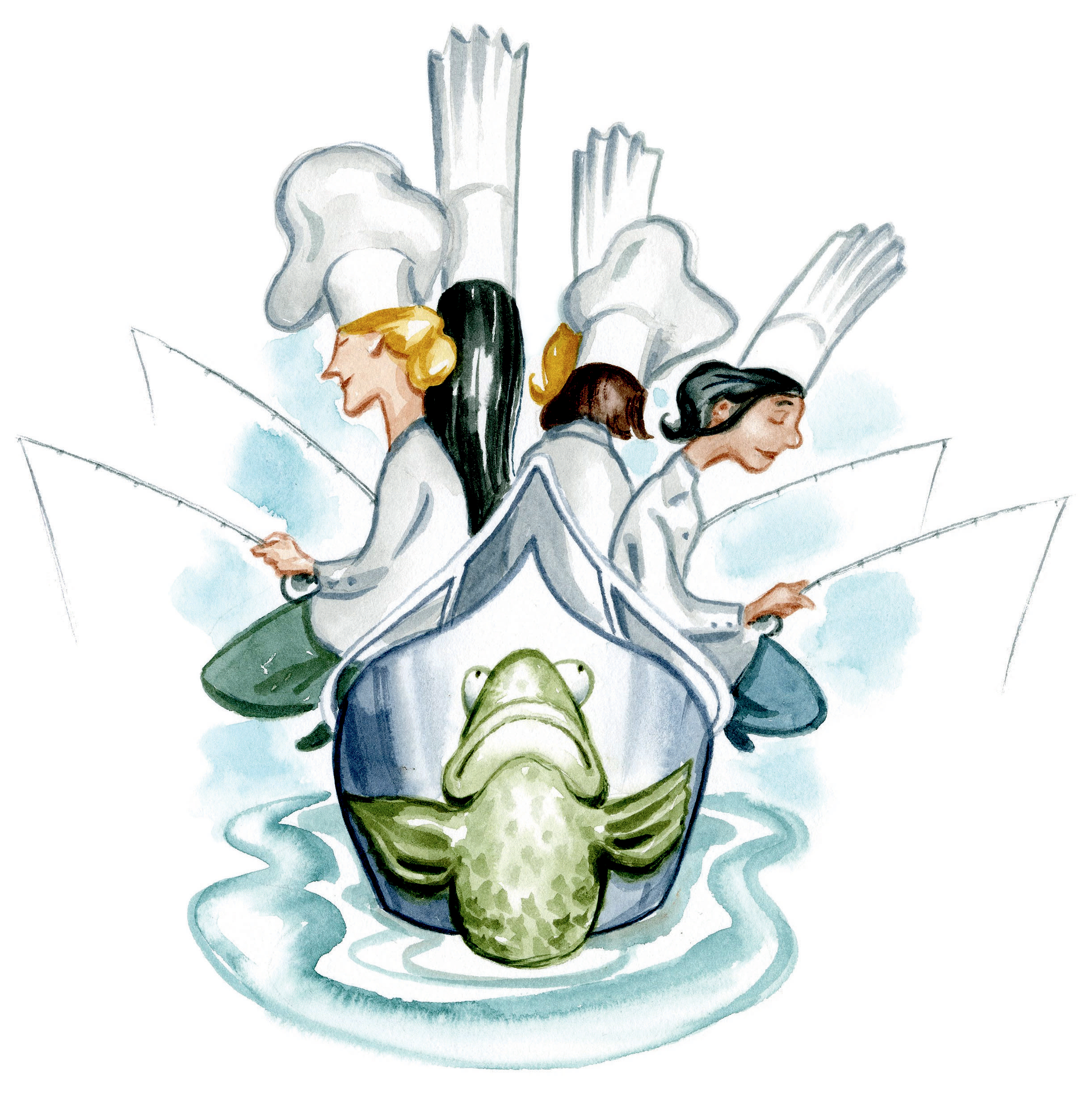
Tim Bower
SPORTING
Georgia
Art on Point
Before her death, in 1978, Elisabeth Ireland Poe began turning Pebble Hill, her estate near Thomasville, into a museum dedicated to sporting art. Poe hunted, rode horses, and trained dogs; legend has it that nearly one hundred hounds, shepherds, and retrievers had the run of her three thousand acres. Pebble Hill’s new exhibition, Working like a Dog (through April 25), is a fitting tribute to both Poe’s legacy and the connection between man—and woman—and dog. The collection, which is on loan from the Genesee Country Village and Museum in New York, affirms Poe’s legacy of attracting world-class talent to her home. “It’s wonderful to be able to bring such high-quality art to this part of Georgia,” says Whitney White, executive director of
Pebble Hill. “Not only will people have access to the art, but they can see it within the setting of our property.” Paintings and sculptures celebrate working dogs from the seventeenth through the twentieth centuries. The exhibit also includes pieces from Poe’s archives and black-and-white photographs of her sitting stoically surrounded by canine companions—most notably her prized German shepherd Gloria. pebblehill.com
HISTORY
Kentucky
Fear and Loathing in Louisville
In 1970, between publishing Hell’s Angels and Fear and Loathing in Las Vegas, the gonzo journalist, longtime Rolling Stone contributor, and Louisville native Hunter S.
Thompson ran for sheriff of Pitkin County, Colorado. Thompson was drawn to the mountain town of Aspen, and made it his home for decades until his death, in 2005. Under his Freak Power Party ticket, his platform included relaxing drug-offense penalties and replacing asphalt with sod. His campaign nearly worked: Thompson lost by only 468 votes to the incumbent, Carrol D. Whitmire. The writer’s interlude of political theater is the subject of the exhibition Freak Power: Hunter S. Thompson’s Campaign for Sheriff (April 30–September 2) at his hometown’s Frazier Kentucky History Museum. “People remember him because of the drugs and the booze, but during this time he was publishing some of the most powerful writing of his life,” says curator Daniel Watkins, who spent a decade collecting memorabilia from Aspen barns and basements. The show includes drawings by the illustrator and frequent Thompson collaborator Ralph Steadman and silk screens by Thomas W. Benton, who created the iconic “Thompson for Sheriff” image: A two-thumbed fist in the air holds a button of peyote, backed by the bold fever-dream outline of a sheriff’s star. fraziermuseum.org
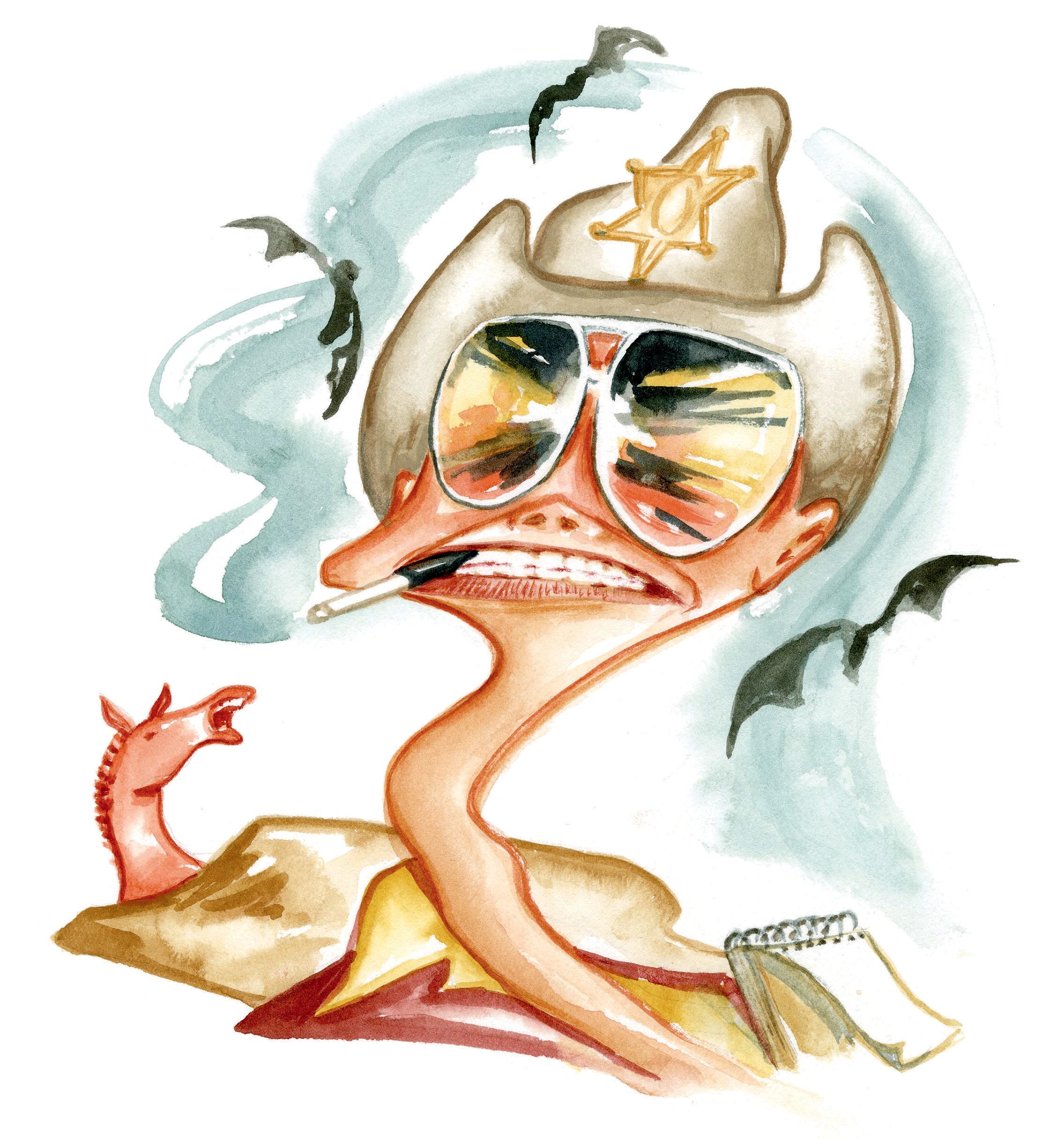
Tim Bower
TRAVEL
Maryland
Chesapeake Charm
During the War of 1812, the residents of St. Michaels caught wind that the British were planning an attack on their Chesapeake Bay community, then known for its shipbuilding. The Marylanders cleverly hung lanterns in the trees beyond the darkened town, tricking the British into overshooting. These days in the serene Eastern Shore hamlet, that naval history is still a major point of civic pride, perhaps most evident in the Return of the Fleet (April 5), held each spring to celebrate the Inn at Perry Cabin’s armada of oceangoing racing yachts and canal boats returning to the harbor after a long winter. “We’ll have muskets firing and bagpipes playing. We make a party out of it,” says Michael Hoffmann, managing director at the waterfront hotel. Another reason for merriment: Spring brings the opening of the inn’s new Pete Dye–designed golf course. The fifty-mile drive from Annapolis is scenic, but if you’re looking for a shortcut, the inn will pick you up from the capital city in a Hinckley yacht and ferry you across the bay, leaving you to sip champagne and take in the views. theinnatperrycabin.com
HOTEL
Mississippi
Soft Opening
It’s a universal irony: Sleepy little towns like Cleveland, Mississippi, boast very few places where visitors can actually sleep. Resolving that conundrum provided the impetus behind Cotton House, a five-story, ninety-five-room boutique hotel slated to open in downtown Cleveland in April. The decor is decidedly Delta: Artwork depicts the rich landscape and even richer personalities, the rooftop feels like a juke joint, and the lobby beckons with easy chairs. The real star, though, is the food overseen by James Beard Award semifinalist chef Cole Ellis. His darling Delta Meat Market, which revolutionized the Cleveland dining scene as well as the nightlife with its Friday happy hours, will move from its location across the street into the Cotton House’s lobby. “One thing folks made clear is that they want the new place to have the feel of the current Meat Market, and it will,” Ellis says. “Although for the first time, we’ll be open for breakfast and dinner, too.” Bar Fontaine, the rooftop hangout, features homemade pastas and an expansive wine list. “But we’ll rest our hats on a hell of a great bourbon bar,” Ellis says. If you aren’t feeling so sleepy after one nightcap, order another. In true Delta fashion, Ellis’s policy is, generally, “stay until we kick you out.” cottonhousecleveland.com
FOOD
North Carolina
Ham—and Yam—It Up
The year was 1985. The battle: for swine supremacy. The competitors: Smithfield, North Carolina, versus Smithfield, Virginia. Both hamlets had long histories as pork-processing powerhouses, and both sent representatives to Johnston County, North Carolina, to duke it out for bragging rights to the title Ham Capital of the World. The contest was judged by two food scientists and one ham maker, and the cities brought their best cooked and cured cuts to the table. North Carolina won whole hog. “After a couple of years, we kept winning, and they stopped coming,” says Sarah Edwards, the executive director of Downtown Smithfield Development Corporation, which still hosts the Smithfield Ham & Yam Festival (May 4) in the Tar Heel State every year. There’s a barbecue cook-off, of course, but also another regional favorite to sample—sweet potatoes, baked into pies and sugar-dusted in yam funnel cakes. Since Johnston County is also one of the nation’s biggest sweet-potato producers, children carry on the competitive spirit by decorating the vegetables for the “What’s That Yam Thing?” contest. Past entries have included Pharrell Will-yams, the Greatest Show-yam, and Uncle Yam. hamandyam.com
ART
South Carolina
Painting the Town
Ten years ago, most residents would have confessed that there wasn’t a whole lot to do in little Lake City. But ever since the businesswoman Darla Moore, who hails from the area, instituted ArtFields in 2013, the once-struggling tobacco town has transformed into a mecca for artists and art lovers the South over. The nine-day celebration imports four hundred works of art, which get displayed in the library, barbershops, galleries, and banks for the tens of thousands of visitors to peruse, while they also enjoy street entertainment and workshops. This year, April 26–May 4, the event is giving away more than $145,000 to the winning artists—the top two will be chosen by a jury of professionals and two more by spectators, and more than a dozen runners-up will receive prize money as well. “Winning makes a significant impact on these artists’ lives,” says Kevin Lassen, who has volunteered with ArtFields since its inception and joined the team full-time in 2016. One could say the same for the community, which retains the top four pieces from the festival for Lake City’s permanent collection. “I grew up in Sumter, which is about forty-five minutes away,” Lassen says. “Lake City was just a place you drove through to get to the beach. Now there are new businesses all over the place. The transition is astounding.” artfieldssc.org
ANNIVERSARY
Tennessee
Blues & BBQ B-Day
“Memphis is a city that’s changed the world,” says Mayor Jim Strickland. Naturally, the chief city official has nice things to say about his municipality, but plenty of milestones from the past two hundred years back him up. Memphis was a major player in the civil rights movement and home to early blues, soul, and rock-and-roll legends like Elvis Presley, Johnny Cash, and W. C. Handy. “Now there’s fifteen billion dollars of development going on downtown,” Strickland says. “There’s new energy in the city.” It’s this notable history—and bright future—that Memphians intend to celebrate during the Memphis in May International Festival. Instead of spotlighting another country, as the event has done since its founding in 1977, the city this time will mark its bicentennial with a monthlong party to salute itself. It all kicks off with the Beale Street Music Festival, followed by a World Championship Barbecue Cooking Contest that features top pit masters from around the world showcasing the city’s famous slow-cooked pork (enjoyed best on a sandwich capped with slaw, Strickland will tell you), both wet and dry ribs, and whole hog barbecue (and vying for $117,000 in prize money). The month culminates in Celebrate Memphis (May 25), when musicians perform near a Guinness World Record–setting 1,059-foot-long picnic table decked with fare from local eateries. Which bites does His Honor recommend? “You’re not going to get me to pick a favorite,” Strickland says. “It’s an election year.” memphisinmay.org
MUSIC
Texas
Repeat Chorus
Die-hard fans and volunteers will descend on small-town Texas for the thirty-second year of the independent and mighty Old Settler’s Music Festival (April 11–14). Since it began in 1987 at Old Settlers Park in Round Rock, attendance has grown, necessitating expansions—first to Dripping Springs, then to Driftwood, and then to the rolling hills of Tilmon in 2018. Through the years and moves, the gathering has retained its close-knit charm. “We’re not a huge operation—we’re more of a mom-and-pop shop,” says executive director Jean Spivey, the festival’s sole full-time employee. Old Settler’s relies on volunteers to run the day-to-day operations—a few guests even started a stage called Camp Shhhtimes, a series of intimate after-dark performances. “Since it’s completely unplugged, the audience has to be stone-cold silent,” explains Spivey, who gave the shushed late-night tradition an official platform last year by incorporating it into the festival schedule. Tilmon is an hour’s drive from Austin and San Antonio, and this year’s top-notch talent includes Jason Isbell, Brandi Carlile, Mandolin Orange, and John Moreland. “It’s a festival for people who aren’t sure they even like festivals,” Spivey says. “You make friends with your neighbors. It’s a big community, but it will always be small enough to make connections.” oldsettlersmusicfest.org
STYLE
Virginia
Miniature Masterpieces
Parting with exquisite pieces of jewelry is the designer Elizabeth Locke’s bread and butter. But not the antique Italian micromosaics—tiny one- to two-and-a-half-inch works of art composed of as many as 1,400 minuscule tiles set in brooches, pendants, necklaces, and rings—from her personal collection. “I got very attached to them and found that there were certain micromosaics that I didn’t want to sell, so I put them in a safe,” Locke says. “First I had one, then five, then ten, and the next thing you know, I had a hundred.” For the first time, her stunning assortment will be on display at the Virginia Museum of Fine Arts in Richmond for A Return to the Grand Tour: Micromosaic Jewels from the Private Collection of Elizabeth Locke (April 27–September 2). “There was a huge interest at the end of the eighteenth century in anything classical, and artisans around the Vatican wanted to make these and sell them to tourists,” Locke says. Depictions include historic sites and jolly Italian peasant scenes, plus dogs, colorful butterflies, and an intricately textured parrot. Locke hunts down the baubles, often finding them at estate sales or from dealers worldwide. In most instances, she works with goldsmiths she employs to reset each treasure in nineteen-karat gold. “Sometimes I go six months without finding one, and then I’ll find three in a day,” she says. “I just have to keep looking.” vmfa.museum
HOTEL
Washington, D.C.
Here to Stay
When the Dupont Plaza (now the Dupont Circle Hotel) opened in 1947, Harry S. Truman occupied the White House. By the time John F. Kennedy was inaugurated, the nuclear physicist Leo Szilard had moved into the hotel. A Hungarian émigré who had helped develop the atomic bomb for the Manhattan Project, Szilard made the lobby his office, where he theorized, wrote op-eds, and then petitioned Kennedy to stop the nuclear arms race. Thanks to a multimillion-dollar renovation that began last year, the lobby and outdoor terrace were revamped, and the presidential suite, at five thousand square feet, is now one of the largest in D.C. The new lobby bar, Doyle, is the brainchild of the interior designer Martin Brudnizki, whose CV includes the Beekman in New York City and the well-heeled private club Annabel’s in London. Brudnizki has taken the watering hole from a pedestrian hotel bar to a diplomat-worthy cocktail club. “With more than sixty embassies in our neighborhood, we’re always entertaining guests from around the globe,” says the hotel’s general manager, Joel Freyberg. “It’s a place where many have brokered peace treaties or found their true love.” Now, with tony leather swivel stools alongside a marble bar accented by gleaming gold barware, the lounge has a style that nods to its midcentury heyday. Perhaps the Cold War physicist, martini in hand, would find that the Dupont still feels like home. doylecollection.com
ANTIQUES
West Virginia
A Punch Above
It’s said that the Sweeney Punch Bowl—at five feet tall, 225 pounds, and sixteen gallons the biggest piece of cut lead crystal ever made—was originally designed for the famous legislator Henry Clay. Wheeling’s Sweeney Glass Company allegedly created the ostentatious container to thank the Kentucky politician for pushing for higher tariffs on imported glass. The Sweeney family made additional “float bowls,” and Clay ended up with a slightly more manageable version that held a still-impressive seven gallons; sources say in later years the whiskey-loving statesman used the bowl as a font at his own born-again baptism. Believe that or not, you can see the other, larger surviving Sweeney Punch Bowl at Oglebay Institute—one of the nation’s oldest arts councils—during its sixty-fifth-anniversary Antiques Show & Sale (April 5–7). With more than fifty vendors of textiles, Ohio Valley furniture, and works from the Monongahela glass industry, the show is the longest-running in the state and is considered one of the best in the country. As for the dazzling Sweeney bowl, Christin Byrum, an Oglebay Institute director, says, “we put it front and center” during Friday’s kickoff preview party in the on-site Glass Museum. oionline.com
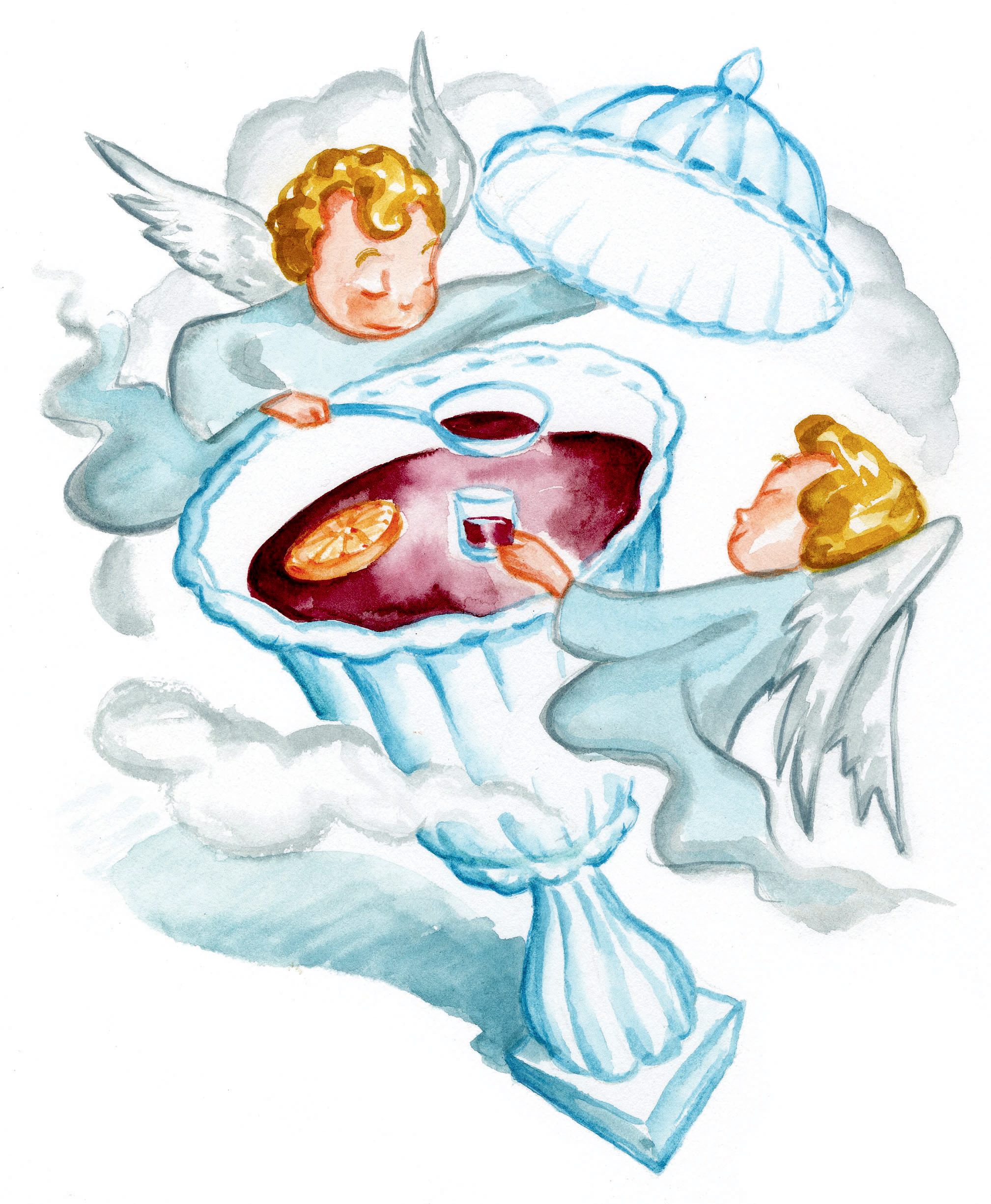
Tim Bower
—Parker Butler, Kinsey Gidick, CJ Lotz, Caroline Sanders, and Dacey Orr Sivewright


